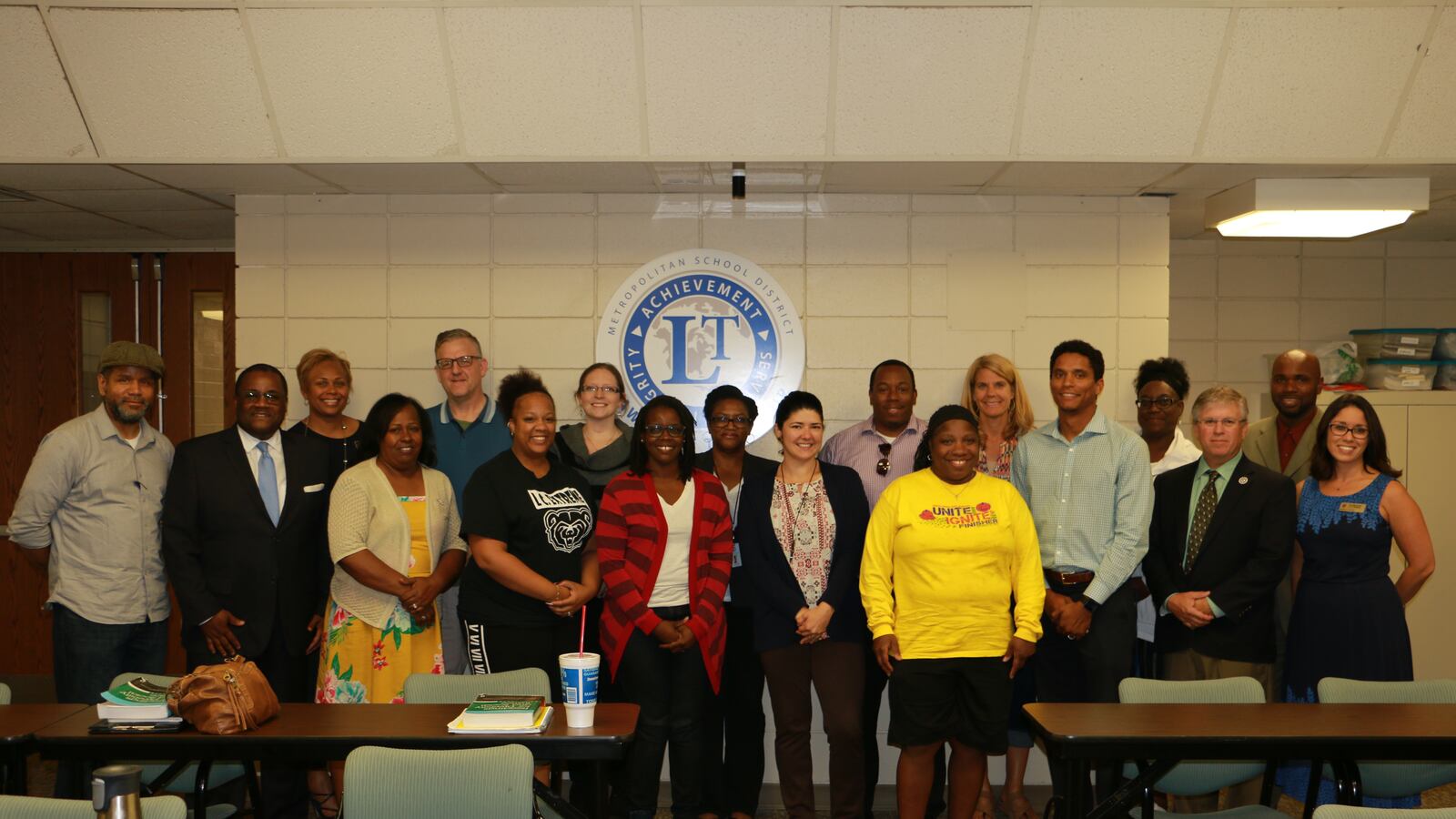Michael Johnson has worked in schools for almost two decades, but he might finally stand in front of his own classroom next year.
Johnson, 45, is one of 14 prospective teachers in a new program designed to help teachers aides and other non-licensed school staff members earn teaching licenses while they work. The goal is to increase the district’s hiring pool while making it more diverse.
“We’re missing the mark on a lot of homegrown (teachers) that we have right within our own four walls,” said Tim Harshbarger, executive director for human resources in Lawrence Township Schools. “These are folks that know us, know our culture — some have been with us for years.”
The “district-based alternative certification” program was formed out of a partnership between Lawrence Township and the Indiana University School of Education at IUPUI. The 18-month program offers classes in the evening so students can work toward an elementary school teaching license while keeping their district jobs.
For Johnson, who has worked at Harrison Hill Elementary School for the past four years as a liaison between students, families, and teachers, the new program lets him move into a more direct role to help students while also teaching him more about what to look for in his own children’s education.
“I started to realize I can only go so far with what I have,” said Johnson, a father of two. “Doing this not only supports you as an individual to get the certification and get into teaching, but it helps you as a parent.”
For years, Indiana has been struggling to find ways to encourage more people to become teachers and keep experienced teachers in the classroom. The state has launched internet campaigns, created scholarships, and given districts permission to award some teachers in high-demand areas stipends, but districts still report that they struggle to hire — especially teachers of color.
That is a particular concern in urban districts like Lawrence Township and Indianapolis Public Schools, where most students are not white. In 2015-16, the most recent year’s data available, 93 percent of Indiana teachers were white, while 4.3 percent were black and 1.3 percent were Hispanic. The state’s enrollment this year shows two-thirds of students were white, and about 12 percent each were black or Hispanic.
Lawrence is hoping a “grow your own” approach could be a more effective solution for hiring that also allows students to learn from teachers with a better understanding of their backgrounds. Research has shown that students can benefit from learning from teachers who look like them.
Twelve of Lawrence’s 14 teacher program participants are people of color, and most of them are social workers, teaching assistants and behavior specialists who have been working in Lawrence Township for years.
“Traditional programs oftentimes tend to attract white women as students, and the research shows us that these alternate certification programs are more likely to attract students of color who will be teachers of color down the road,” said IUPUI professor Paula Magee.
The 18-month teacher certification program includes seven college classes and a semester of student teaching, and it costs about $14,000, with no financial assistance provided by the district or the university. Participants will finish in December with an elementary school teaching license and could be employed as teachers as early as January, although a job is not guaranteed.
They’ll also be six classes short of completing a master’s degree in education and will have the foundation to add-on other license areas, such as special education or English as a new language.
Because the classes are offered in the evenings, students can keep their district jobs during the day — often a hurdle for career-changers who need a full-time income, but only have the option to go to school during business hours. The classes are also held in Lawrence Township, so students don’t have to travel far.
“We’ve tried to make it really accessible for the students,” Magee said. “It makes that entry back into grad school a little smoother for them.”
Several other states have explored similar teaching programs for years, sometimes with mixed results.
Illinois’ effort to educate and license 1,000 new teachers ran into problems early on when students, who could take out loans provided by the state, were found to be dropping out in high numbers, due to poor academic performance or personal reasons. But programs that take students who already have a college degree, like the one in San Francisco, and those that don’t require the state to make a financial gamble, could be better positioned to succeed.
Magee said IUPUI and Lawrence are working on ways to address how to support its prospective teachers even when they leave the program. So far, only one or two students are not expected to move on to the student teaching portion in the fall, officials said.
Lawrence officials said this project has been in the works for years, and they’re excited by the turnout so far. The district is already making plans for a second cohort next year, and Magee said Wayne Township has also shown interest in starting a similar program.
To be eligible, prospective teachers need a bachelor’s degree and must be a full-time employee in the district in a non-certified role. Johnson said it was initially difficult to get back into school mode, but the support from his district and the university made a huge difference. He likens their support to the kind he frequently gives to his students and their families.
“It’s rewarding,” Johnson said. “We are all just meeting each other where we are, and that’s helping us to meet families where they are. And that’s education.”
This story has been updated to reflect the correct number of remaining classes necessary for teachers to earn a master’s degree.

